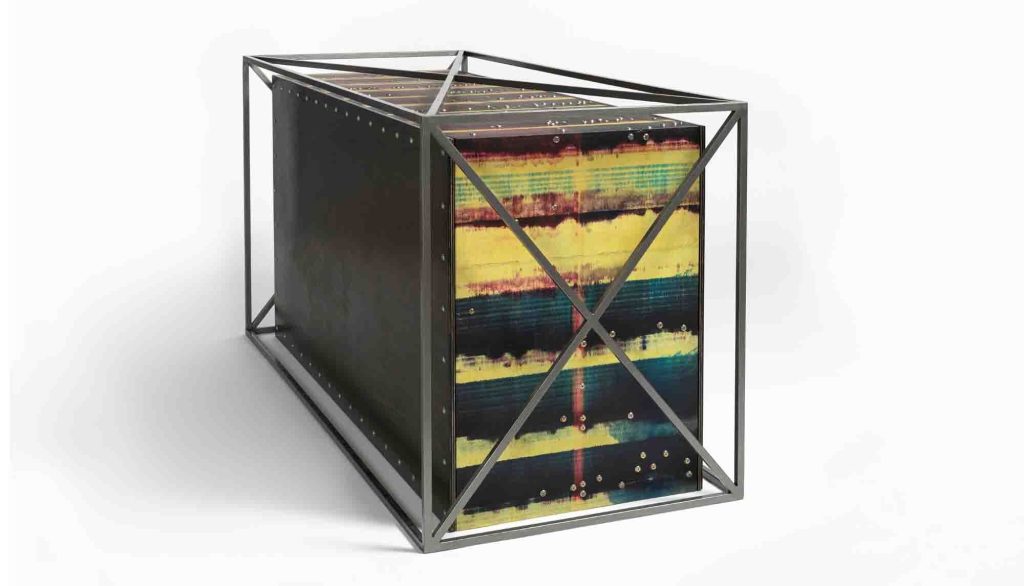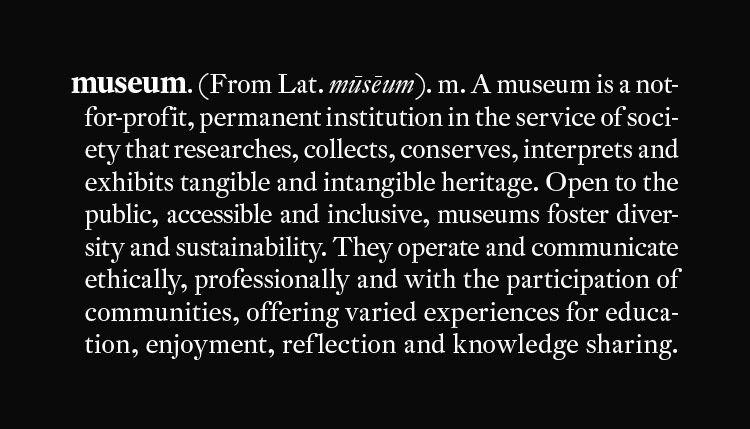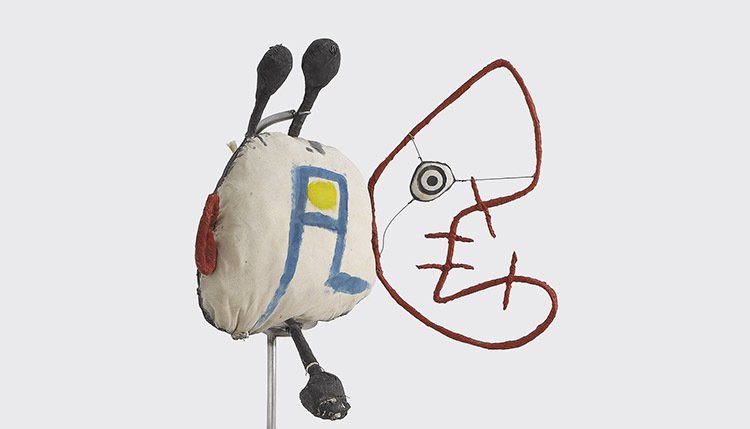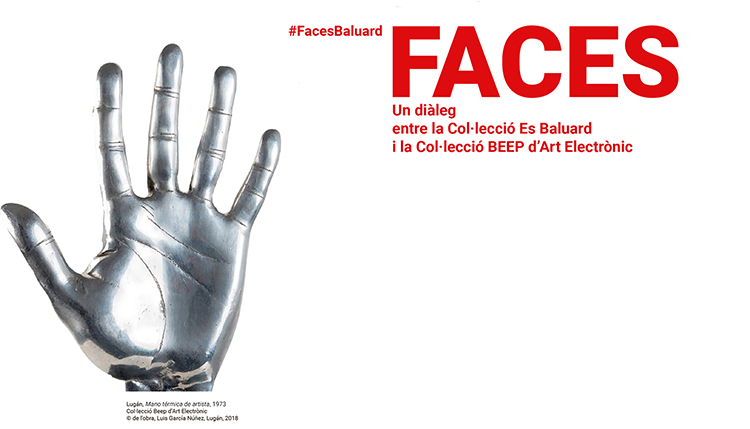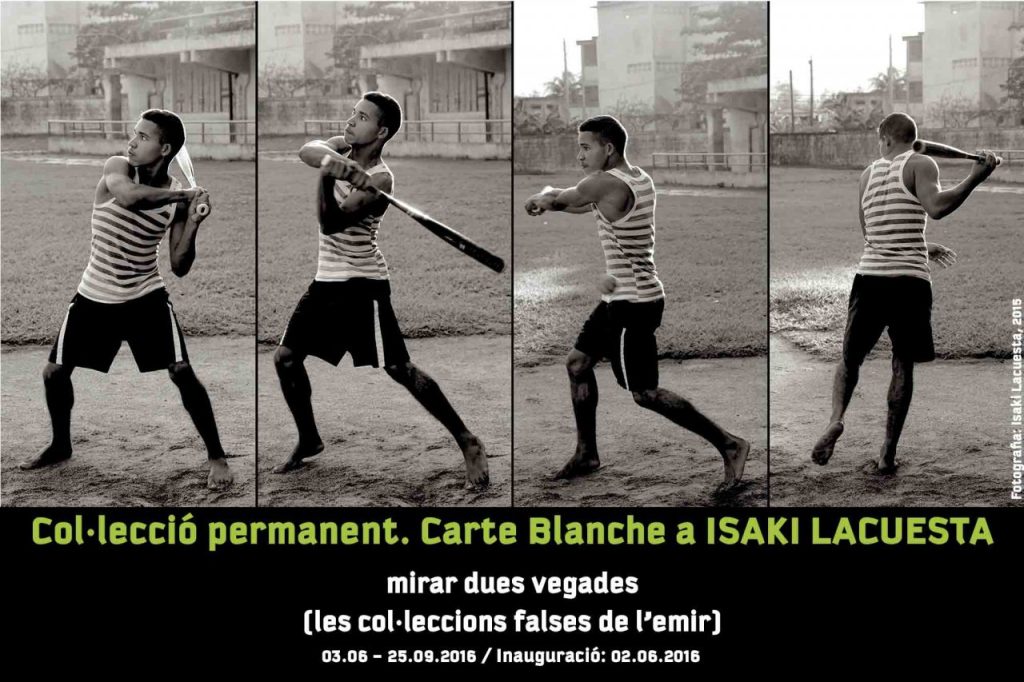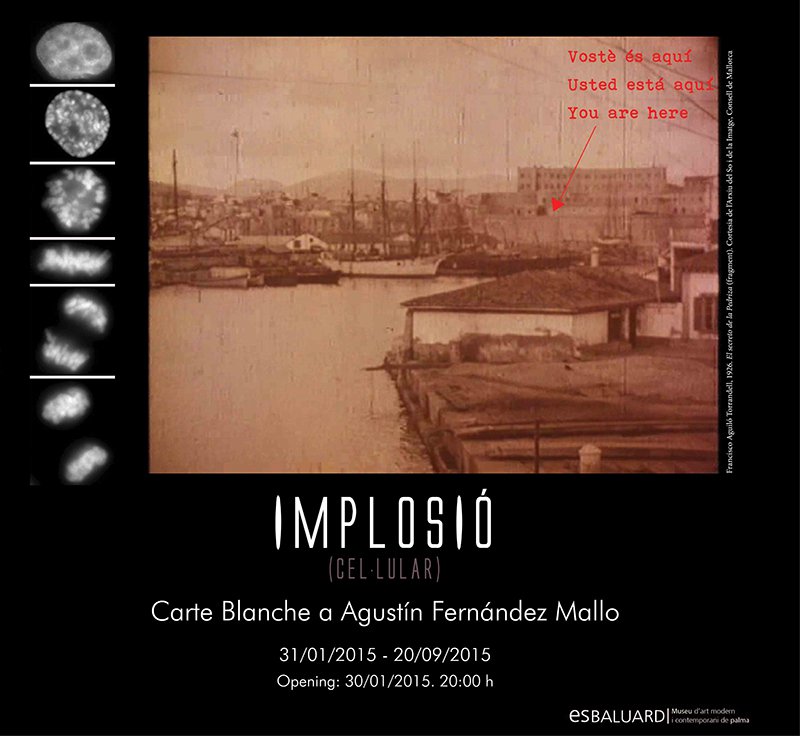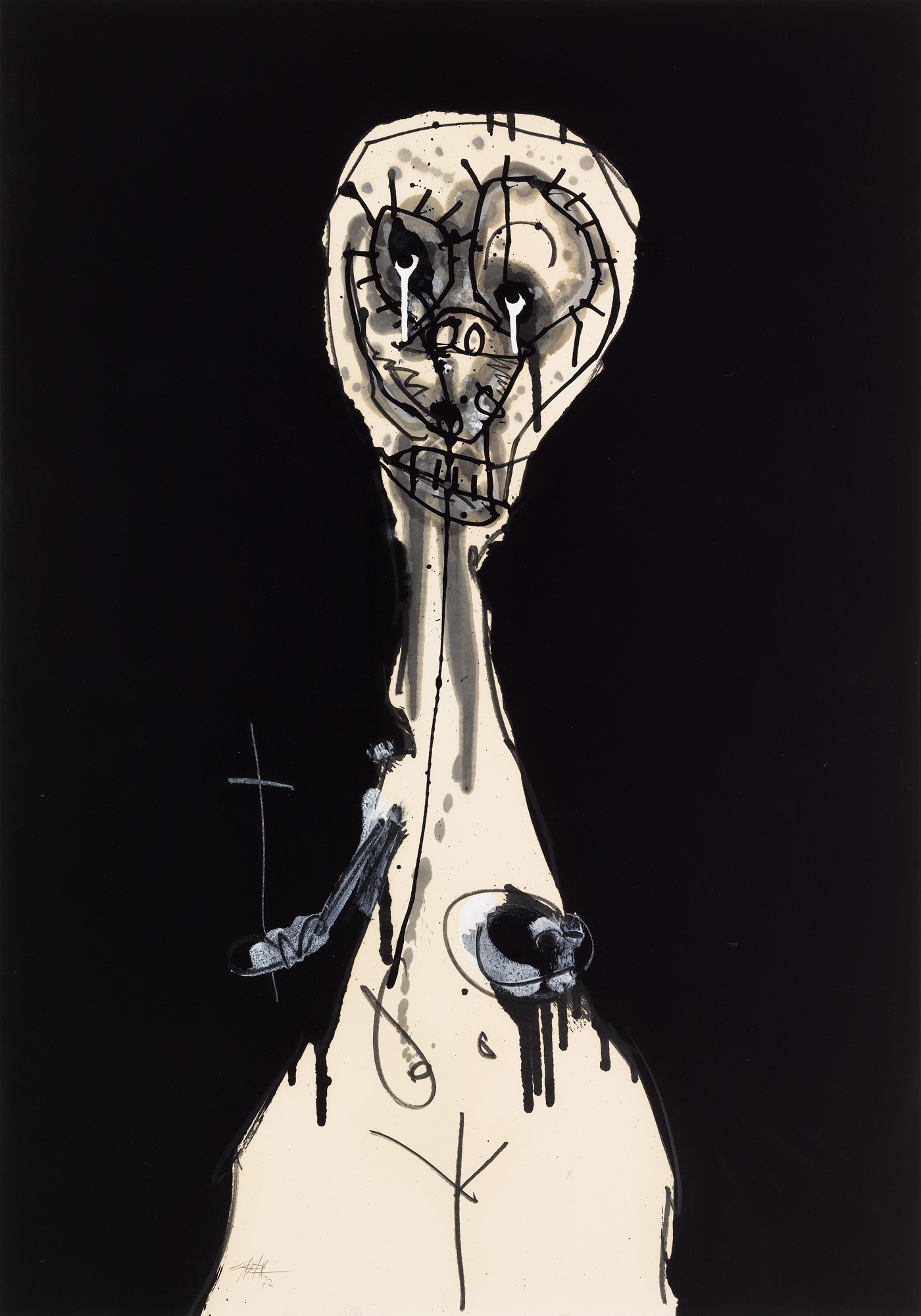
- Artist:
- Antonio Saura
- Date:
- 1972
- Technique:
- Mixed media on paper
- Dimensions:
- 100 x 70 cm
- Origin:
- Es Baluard Museu d’Art Contemporani de Palma, Fundació d’Art Serra donation
- Registration number:
- 70
- Exposed:
- No
The work is a black-and-white portrait of Sor Jerónima de la Fuente Yáñez (a 17th-century Franciscan nun from Toledo, the founder in 1620 of the convent of Santa Clara de la Concepción in Manila, the Philippines). Comprised of swift, gestural strokes, the figure, in a frontal position, is reduced to elementary patterns, holding a crucifix in her hands along with another element that is difficult to identify – possibly a book -, as in Velazquez’s portrait La venerable madre Jerónima de la Fuente (The Nun Jerónima de la Fuente, 1620). It is a custom of Saura’s to recreate paintings by Velázquez or Goya by means of an automatic and compulsive expression. Saura’s style is defined as monochromatic, using black only, or near-monochromatic, introducing browns and greys on occasions. With swift, energetic strokes, he shuns formal abstraction, becoming a powerful expressionist, and despising the forms of traditional representation.
E.C.
Antonio Saura, a self-taught artist, began painting at the age of 15 while convalescing from a long illness. In 1952 he travelled to Paris, where he resided until 1955. There he came into contact with the avant-gardes of the time, like French Informalism or the American Abstract Expressionism of Pollock or De Kooning. This led him to abandon the initial surrealism of his work to move towards abstract art. In 1957, after returning to Spain, he founded the Grupo El Paso with artists like Luis Feito, Manolo Millares and Rafael Canogar, among others, and as such they introduced Informalism into Spain. The members of the group considered themselves to be the heirs of the “Black Spain” and as a result they would share characteristics like dramatism, chromatic sobriety or intense expressivity. One could say that Antonio Saura’s oeuvre takes the negative, the monstrous, the natural, the violent and the intuitive from Surrealism, the expressive character of the creative process from Action Painting, and abstraction from Informalism. Some highlights of his extensive oeuvre are the series of works like Crucifixiones, Historia de España, Multitudes, Retratos imaginarios or Saurimaquias.
E.C.
